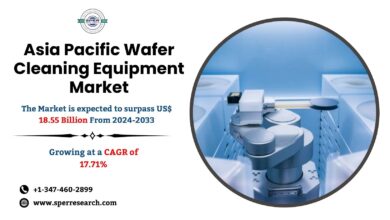Leveraging IoT for Real-Time Supply Chain Visibility and Efficiency
Digital transformation in supply chain management is not just a trend but a necessity for companies aiming to maintain a competitive edge. Among the various technologies driving this transformation, the Internet of Things (IoT) stands out as a game-changer.
IoT offers unprecedented levels of visibility, control, and efficiency in supply chain operations by connecting physical assets to digital networks.
This article explores how leveraging IoT can enhance real-time supply chain visibility and efficiency, driving digital transformation in supply chain management.
Understanding IoT in Supply Chain Management
The Internet of Things (IoT) refers to the network of interconnected devices that collect and exchange data via the internet. In supply chain management, IoT involves equipping assets such as inventory, machinery, and vehicles with sensors and communication devices that transmit real-time data. This data is then analyzed to provide insights into various aspects of the supply chain, from inventory levels and shipment tracking to equipment performance and environmental conditions.
Real-Time Supply Chain Visibility with IoT
**1. Enhanced Tracking and Monitoring
One of the primary benefits of IoT in supply chain management is the ability to track and monitor goods and assets in real-time. IoT sensors embedded in shipments and containers can provide accurate, up-to-date information on their location, condition, and status. This level of visibility allows companies to:
- Monitor Shipment Progress: Real-time tracking of shipments helps companies ensure that goods are moving as planned. This information can be used to estimate delivery times accurately and manage customer expectations.
- Ensure Product Integrity: IoT sensors can monitor environmental conditions such as temperature and humidity during transit. This is especially crucial for perishable goods and sensitive products that require specific conditions to maintain quality.
- Optimize Inventory Management: Real-time data on inventory levels and movements helps companies avoid stockouts and overstocking. Automated inventory updates based on IoT data can improve inventory accuracy and streamline replenishment processes.
**2. Proactive Issue Resolution
IoT-enabled supply chain visibility allows for proactive issue resolution. By continuously monitoring assets and operations, companies can identify and address potential problems before they escalate. For example:
- Predictive Maintenance: IoT sensors on machinery and equipment can detect signs of wear and tear, enabling predictive maintenance. By addressing maintenance needs before they result in equipment failures, companies can minimize downtime and avoid costly disruptions.
- Early Detection of Delays: Real-time tracking data helps companies identify delays or deviations from planned routes. Early detection allows for quick intervention, such as rerouting shipments or adjusting delivery schedules, to mitigate the impact on operations.
Improving Efficiency through IoT
**1. Streamlining Operations
IoT can significantly enhance operational efficiency by automating and optimizing various supply chain processes. Key areas where IoT drives efficiency include:
- Automated Inventory Management: IoT sensors can automatically update inventory levels and trigger reorder processes when stock falls below predefined thresholds. This reduces manual inventory management efforts and ensures that stock levels are always optimized.
- Efficient Route Planning: IoT data on traffic conditions, weather, and vehicle performance can be used to optimize delivery routes. Real-time route adjustments help reduce fuel consumption, minimize delays, and improve overall transportation efficiency.
- Smart Warehousing: IoT-enabled warehouses use sensors and automation to streamline storage and retrieval processes. Automated systems can track inventory locations, manage shelf life, and facilitate efficient picking and packing operations.
**2. Data-Driven Decision Making
The data collected through IoT provides valuable insights that drive informed decision-making. By analyzing real-time and historical data, companies can make better strategic decisions and improve their supply chain performance. Examples include:
- Demand Forecasting: IoT data on sales patterns, inventory levels, and market trends can enhance demand forecasting accuracy. Improved forecasting helps companies align their supply chain operations with actual demand, reducing excess inventory and minimizing stockouts.
- Supplier Performance Evaluation: IoT data on supplier deliveries, quality, and compliance can be used to evaluate supplier performance. This information helps companies make informed decisions about supplier relationships and improve procurement strategies.
Challenges and Considerations
While the benefits of IoT in supply chain management are substantial, there are several challenges and considerations to address:
**1. Data Security and Privacy
With the increased volume of data generated by IoT devices, ensuring data security and privacy is paramount. Companies must implement robust security measures to protect sensitive information from unauthorized access and cyberattacks. This includes encrypting data, securing communication channels, and establishing access controls.
**2. Integration with Existing Systems
Integrating IoT solutions with existing supply chain systems can be complex. Companies must ensure that IoT data is seamlessly integrated with enterprise resource planning (ERP) systems, supply chain management software, and other business applications. Effective integration requires careful planning and technical expertise.
**3. Data Management and Analytics
The sheer volume of data generated by IoT devices can be overwhelming. Companies need to invest in data management and analytics capabilities to extract meaningful insights from the data. This includes implementing advanced analytics tools, leveraging machine learning algorithms, and ensuring data quality and accuracy.
**4. Cost Considerations
Implementing IoT solutions involves upfront costs for devices, sensors, and infrastructure. Companies must evaluate the return on investment (ROI) of IoT initiatives and consider the long-term benefits in terms of improved efficiency and reduced operational costs. Careful budgeting and planning are essential for successful IoT adoption.
The Future of IoT in Supply Chain Management
The future of IoT in supply chain management is promising, with continued advancements expected to drive further innovation. Key trends to watch include:
**1. Increased Automation
The integration of IoT with automation technologies, such as robotics and artificial intelligence (AI), will lead to even greater efficiency in supply chain operations. Automated systems will increasingly leverage IoT data to make real-time decisions and perform tasks with minimal human intervention.
**2. Enhanced Predictive Analytics
Advancements in predictive analytics will enable more accurate forecasting and risk management. IoT data combined with advanced analytics will provide deeper insights into supply chain dynamics, helping companies anticipate and address potential disruptions.
**3. Greater Connectivity
The expansion of 5G and other high-speed communication technologies will enhance the connectivity of IoT devices, enabling faster and more reliable data transmission. This will improve real-time monitoring and control capabilities, further driving efficiency in supply chain management.
**4. Sustainability and Green Logistics
IoT will play a role in promoting sustainability by optimizing resource usage and reducing waste. Smart logistics solutions powered by IoT will help companies achieve their sustainability goals by minimizing energy consumption, reducing emissions, and improving overall environmental performance.
Conclusion
Leveraging IoT for real-time supply chain visibility and efficiency represents a significant step forward in digital transformation in supply chain management. By providing enhanced tracking, proactive issue resolution, and data-driven decision-making, IoT transforms how companies manage their supply chains, driving operational excellence and competitive advantage.
However, addressing challenges related to data security, integration, and cost is crucial for successful IoT adoption. As technology continues to evolve, the potential of IoT to revolutionize supply chain management will expand, offering new opportunities for innovation and efficiency.
For companies looking to stay ahead in the digital age, embracing IoT and its capabilities is not just an option but a strategic imperative.



